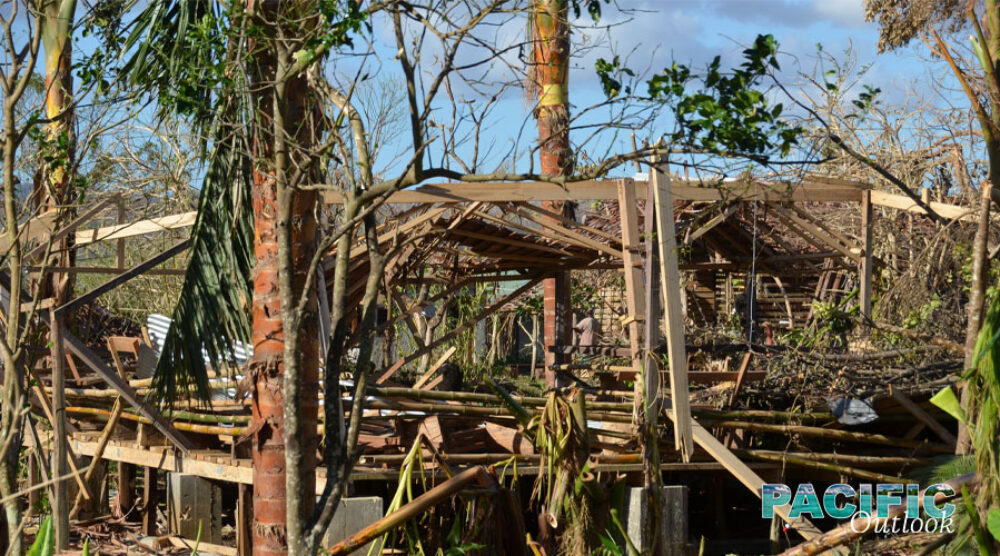As floods wreaked havoc across vast areas of eastern Australia, 2022 was described as ‘The Great Deluge’, with record-breaking rainfall and flooding, leading to catastrophic losses of lives, livelihoods, businesses, infrastructure, homes and in some cases, displacement of whole communities. Sustained efforts over many years will be required to provide the support and resources needed to move from rescue and recovery through to reconstruction and rehabilitation.
Now spare a thought for our nearest neighbours in the Pacific, who face such calamitous disaster impacts with ever-growing frequency and severity. Withstanding the impacts of extreme weather and other disasters, including the challenges persisting with the COVID pandemic, is exacerbated in the small island developing states (SIDS) of the Pacific which are amongst the most exposed and vulnerable to geophysical, hydro-meteorological, and biological hazards.
Although the level of exposure is similar, their vulnerability differs as Pacific island countries have specific environmental, social and economic challenges that result in limited capacity to finance recovery and build-back-better programs. Infrastructure is one of the most affected sectors by disasters. In the decade to 2020, infrastructure accounted for about US$1.5 billion or 37% of the total damage and losses of the major disasters that occurred in the Pacific.
Climate change, as both an existential threat in itself and a significant ‘threat multiplier’, will likely increase disruption to infrastructure, especially with sea-level rise, storm surge and swells, which will result in the highest adaptation costs in the Pacific allocated to coastal protection measures. And yet, the experience of the decade to 2020 also demonstrates the limited international funding recently directed toward disaster preparedness, with developed countries contributing in post-disaster-related Official Development Assistance more than 20 times that invested in measures to build resilience before disasters strike.
Against the backdrop of both increasingly frequent and intense global disasters, the shortfall is compounded by the delayed efforts of developed countries to deliver on a commitment to provide US$100 billion annually in climate finance to developing countries. At a global level, these financing issues achieved prominent attention at the recent United Nations COP27 conference, with renewed emphasis on meeting the costs of loss and damage suffered, particularly by SIDS, and the pivotal role of both the public and private sectors in addressing the investment gap.
A number of other international programs are focusing attention to assist those who are least equipped to face these existential threats, and realise the urgent priority to build the resilience of communities, infrastructure and economies to withstand future disasters.
The Asia Pacific Ministerial Conference on Disaster Risk Reduction (APMCDRR), convened in Brisbane in September 2022 by the UN Office for Disaster Risk Reduction (UNDRR) with strong support of the Australian and Queensland Governments, brought together UN Member States, intergovernmental organisations, international and national organisations, and stakeholder groups, to accelerate progress on disaster risk reduction. As the regional platform for promoting coordination and cooperation, the conference also supports implementation of the Sendai Framework for Disaster Risk Reduction 2015-2030, and Brisbane saw the roll-out of a number of new initiatives, including a Technical Assistance program designed for SIDS in the Caribbean, Indian and Pacific Oceans. Developed by the Coalition for Disaster Resilient Infrastructure (CDRI), Infrastructure for Resilient Island States (IRIS) is funded by the Governments of Australia, India, United Kingdom, EU and others.
Improving infrastructure resilience and calculating its contribution to positive economic, social, and environmental outcomes is now more evident in contemporary investment planning systems. For example, the Asian Development Bank (ADB) promotes the broader assessment of benefits using its Triple Dividend resilience planning framework. The UNDRR Principles for Resilient Infrastructure sets a global standard to ensure resilience of infrastructure, reduced disruption of basic services and to de-risk investments. Further alignment with community needs is realised as DRR now typically embraces all the ‘social’ infrastructure, in addition to ‘economic’ sector infrastructure, to include public facilities and services required for the operation of a society (education, health, community, cultural, and governance facilities), and increasingly the housing stock, plus the business sector.
Infrastructure investment can also play a direct role in stimulating economies and maintaining employment, an objective magnified in the wake of the economic and social shocks resulting from the COVID-19 pandemic. Described by the Pacific Region Infrastructure Facility (PRIF) as the “most severe economic shock to the Pacific region” the pandemic affected all countries, particularly those which are tourism-dependent, by diverting scarce resources from priority public investment pipelines and halting revenues from existing sectors and services. Furthermore, UNESCAP found the intersection between the COVID-19 pandemic and the existing dangers of climate change and natural disasters has transformed the “riskscape” in the smaller islands of the Pacific, as well as in Asia.
The need to future proof economies and communities, through a resilient infrastructure-led recovery, is therefore recognised as an urgent priority, since according to the Lowy Institute, post-COVID the Pacific is facing “a lost decade of development” with projected increases in poverty and youth unemployment levels, downward pressures on budgets, and increased likelihood of social and political disturbance.
‘Resilience’ is a term now almost universally applied by all major donors, development partners and governments when designing, investing, procuring and implementing infrastructure projects, especially in high risk, vulnerable regions like the Pacific islands. Sustained action requires stronger engagement, collaboration and cooperation among all stakeholders, including the private sector, to operationalise existing funding commitments, and secure the additional funding needed over the short to medium term.
Jack Whelan, Griffith Asia Institute (GAI) Industry Fellow, summarises the key elements of a Thematic Review of Climate and Disaster-Resilient Infrastructure in the Pacific he wrote for the UN Office for Disaster Risk Reduction (UNDRR), as input to the (2023) Mid-Term Review of the Sendai Framework for Disaster Risk Reduction 2015-2030. The Review was supported by the Australian Government Department of Foreign Affairs and Trade (DFAT) through its Australia Pacific Climate Partnership (APCP).








